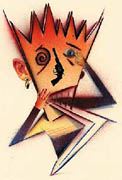Every 9 seconds in the US a woman is abused by an intimate partner- spouse, boyfriend, friend. On the average, more than five women are murdered by their husbands or boyfriends every day.
For support and more information please call the National Domestic Violence Hotline at 1-800-799-SAFE (7233) or at TTY 1-800-787-3224.
In the year 2001, more than half a million American women (588,490
women) were victims of nonfatal violence committed by an intimate partner.
In 2005, there was IPV in about 1 in every 320 U.S. households.3
For 2008, the U.S. Bureau of Justice Statistics estimates that:
- IPV constituted 5% of all violence against males and 22% of all violence against females in the U.S.4
- The rate of IPV for females age 12 or older was 4.3 per 1,000, a 53% decrease since 1993. Against males, the rate was 0.8 victimizations per 1,000, a 54% decrease since 1993.5
- 72% of IPV against males and 49% of IPV against females was reported to police.
- About 99% of IPV against females was committed by male offenders, and about 83% of IPV against males was committed by female offenders.
References
1 Compiled December, 2011.
2 http://www.opdv.ny.gov/statistics/reports/index.html#1_2
3 Klaus, P. (2007). Crime and the Nation’s Households, 2005. Bureau of Justice Statistics, NCJ 217198, http://bjs.ojp.usdoj.gov/index.cfm?ty=pbdetail&iid=752.
4 Truman, J.L. (2011). Criminal Victimization, 2010. (National Crime Victimization Survey). BJS.
http://bjs.ojp.usdoj.gov/content/pub/pdf/cv10.pdf.
5 Catalano, S., Rand, M., Smith, E., & Snyder, H. (2009). Female Victims of Violence. BJS.
http://bjs.ojp.usdoj.gov/index.cfm?ty=pbdetail&iid=2020.
6 Ibid.
Am I abusing my Partner?
Not all men are abusive, how do you measure up?
Abuse Is:
Calling bad names or putting someone down
Shouting and cursing
Hitting, slapping and/or pushing
Making threats of any kind
Jealously and suspicion
Keeping someone away from family and friends
Throwing things around the house
Domestic violence is a crime.
It destroys relationships and families.
It passes from generation to generation.
It doesn’t have to be this way.
If you abuse, you can choose to stop.
Call us at 1-800-799-SAFE (7233) or TTY 1-800-787-3223.
Friends & Family
Yes, it is your business
Maybe he’s your friend, your brother-in-law, your cousin, co-worker, gym partner or fishing buddy. You’ve noticed that he interrupts her, criticizes her family, yells at her or scares her. You hope that when they’re alone, it isn’t worse.
The way he treats her makes you uncomfortable, but you don’t want to make him mad or lose his friendship. You surely don’t want to see him wreck his marriage or have to call the police. What can you do?
Say something. If you don’t, your silence is the same as saying abuse is ok. He could hurt someone, or end up in jail. Because you care, you need to do something… before it is too late.
What Can You Say or Do?
Draw attention to it.
“Do you see the effect your bad words have on her?”
“When you do that, it makes her feel bad.”
“Did you mean to be so rough? That’s not cool.”
Tell him what you think.
“I’m really worried about her safety.”
“I’m surprised to see you act that way. You’re better than that.”
“I care about you, but I won’t tolerate it if you abuse her.”
“This makes me really uncomfortable. It’s not right.”
Express ideas about loving behavior.
“Loving her doesn’t mean abusing her.”
“Good husbands and partners don’t say or do those kinds of things.”
Offer suggestions or solutions.
“Men should never hit or threaten the women they love.”
“Kids learn from their parents. Is this how you want your son to treat women?”
“How would you feel if your daughter chose someone who acted like this?”
“Call me if you feel like you’re losing control.”
“Maybe you should try counseling.”
“You should talk to your faith leader and see what he/she suggests.”
If his behavior is criminal, tell him so.
“Domestic violence is a crime. You could be arrested for this.”
“You could end up in jail if you don’t find a way to deal with your problems. Then what would happen to you and your family?”
He May Not Like It
He may not listen. He may get enraged, deny it, ignore you or make excuses. He may want to talk about what she did to him. He may even laugh it off or make fun of you. Still, you need to say something. Your silence is the same as saying you approve.
Or He May Take You Seriously
and Decide to Change
If men learn to put down and abuse women from other men, they can also learn from other men how to respect women. When you decide that violence against women is unacceptable and choose to lead, other men will begin to think twice before they strike with their words or fists.
It isn’t easy or comfortable, but men must step up to the plate because next time, it could be your sister, mother, friend or co-worker. It’s the right thing to do.
Listen. Teach. Lead.
Help Stop Domestic Violence
If you are concerned about the safety of your friend’s partner or spouse, or to learn about services in your area, contact the National Domestic Violence Hotline at 1-800-799-SAFE (7233) or
TTY 1-800-787-3224.
Do The Right Thing
Tell Him There Is A Better Way
Show Him there is a better way, the Centers for Disease Control offers information on how to develop Violence
Prevention Strategies for you and your partner visit the CDC and their family guide to abuse prevention



 Find us on Facebook
Find us on Facebook Follow us on Twitter
Follow us on Twitter